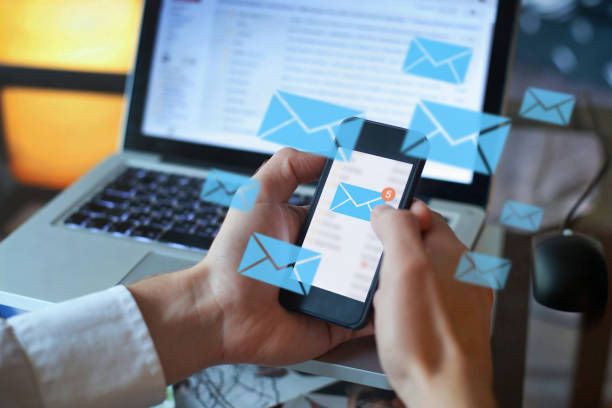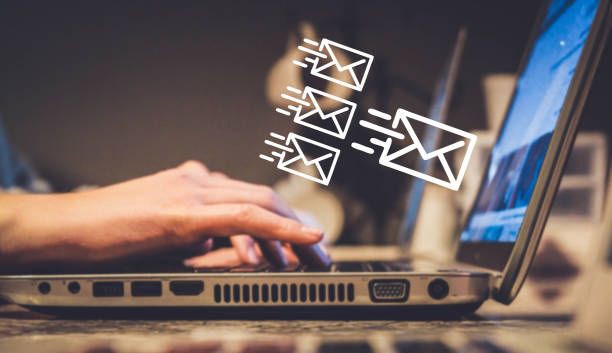In today's digital age, email has become an integral part of our personal and professional lives. However, with the increasing influx of unwanted and spam emails, it's crucial to have the tools and knowledge to manage and control your inbox effectively. One such feature provided by Gmail is the ability to bounce back emails. In this comprehensive guide, we'll explore the concept of email bounce back in Gmail, discuss its benefits, and provide you with expert insights on how to utilize this feature to regain control over your inbox. Whether you're tired of receiving spam or want to send a clear message to unwanted senders, understanding and utilizing Gmail's bounce back feature can significantly enhance your email management experience.
Understanding Email Bounce Back in Gmail

Email bounce back in Gmail refers to the process of returning an email to the sender without accepting it into your inbox. This feature allows you to send a clear message to unwanted or spam senders that their messages are not welcome. By bouncing back an email, you communicate that the message has not been delivered and give the sender the impression that your email address is invalid or inactive.
It's important to note that Gmail's bounce back feature works differently from the "Block" or "Report as Spam" options. Bouncing back an email does not automatically block or filter future messages from the same sender. However, it can discourage spammers from targeting your email address and reduce the chances of receiving further unwanted emails.
How to Bounce Back Emails in Gmail

Bouncing back an email in Gmail is a straightforward process. Follow these steps to utilize this feature effectively:
- Open the email you want to bounce back in your Gmail inbox.
- Click on the three-dot menu icon located at the top-right corner of the email.
- From the drop-down menu, select "Block [sender's name]."
- A confirmation dialog box will appear. Click on "Block" to proceed.
- Gmail will send a bounce back message to the sender, indicating that the email was not delivered.
By following these steps, you can effectively bounce back unwanted emails and send a clear message to the sender that their messages are not reaching your inbox.

Optimizing Your Email Management with Bounce Back
Bouncing back emails can be a useful strategy to manage unwanted emails and maintain a clutter-free inbox. Here are some tips to optimize your email management using Gmail's bounce back feature:
3.1 Be Mindful of Legitimate Emails
While bouncing back emails can be an effective way to filter out unwanted messages, it's essential to be cautious and avoid bouncing back legitimate emails. Double-check the sender and content of the email before deciding to bounce it back. Make sure it's genuinely unwanted or spam to avoid missing out on important messages.
3.2 Combine Bounce Back with Other Gmail Features

Gmail offers a range of features that complement the bounce back feature and provide enhanced email management. For instance, you can use filters and labels to automatically categorize and organize incoming emails. By combining these features, you can create a robust system that streamlines your inbox and ensures that only the emails you want to see reach your primary inbox.
3.3 Regularly Review and Update Bounce Back Settings
Periodically review and update your bounce back settings to adapt to changes in your email landscape. Over time, the effectiveness of bouncing back emails may change as spammers adjust their tactics. Stay vigilant and modify your settings accordingly to ensure optimal email management.
Commonly Asked Questions
Q1: Can bouncing back emails prevent future messages from the same sender?
A1: Bouncing back emails in Gmail does not automatically block or filter future messages from the same sender. However, it can discourage spammers from targeting your email address. To further prevent future messages, consider using Gmail's block or filter options in conjunction with the bounce back feature.
Q2: Will the sender know that I bounced back their email?
A2: When you bounce back an email in Gmail, the sender receives a notification indicating that the email was not delivered. However, the exact reason for the delivery failure is not disclosed, giving the impression that your email address may be invalid or inactive.
Q3: Is bouncing back emails an effective strategy against spammers?
A3: Bouncing back emails can be an effective strategy to deter spammers from targeting your email address. It sends a clear message that their messages are not reaching your inbox. However, it's important to note that determined spammers may continue to send emails despite the bounce back. Utilize other Gmail features, such as filters and blocking, to further enhance your spam protection.
Q4: Can I undo a bounce back action in Gmail?
A4: Unfortunately, Gmail does not provide an option to undo a bounce back action once it has been executed. Therefore, it's crucial to carefully review the email before bouncing it back to ensure that it's genuinely unwanted or spam.
Conclusion
Bouncing back emails in Gmail is a powerful tool to manage unwanted messages and regain control over your inbox. By utilizing this feature effectively, you can send a clear message to spammers and reduce the chances of receiving further unwanted emails. Remember to use the bounce back feature mindfully and in conjunction with other Gmail features to optimize your email management experience. With these strategies in place, you can enjoy a clutter-free inbox and focus on the emails that truly matter to you.

